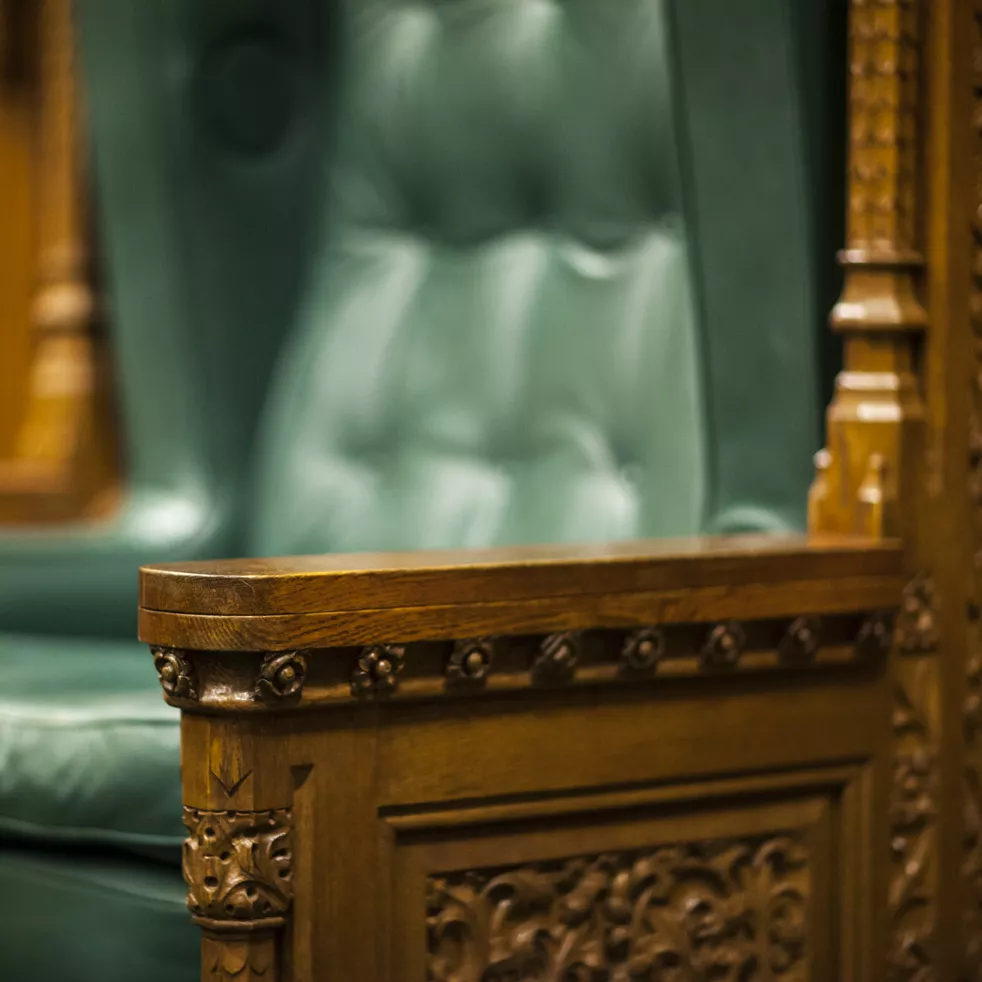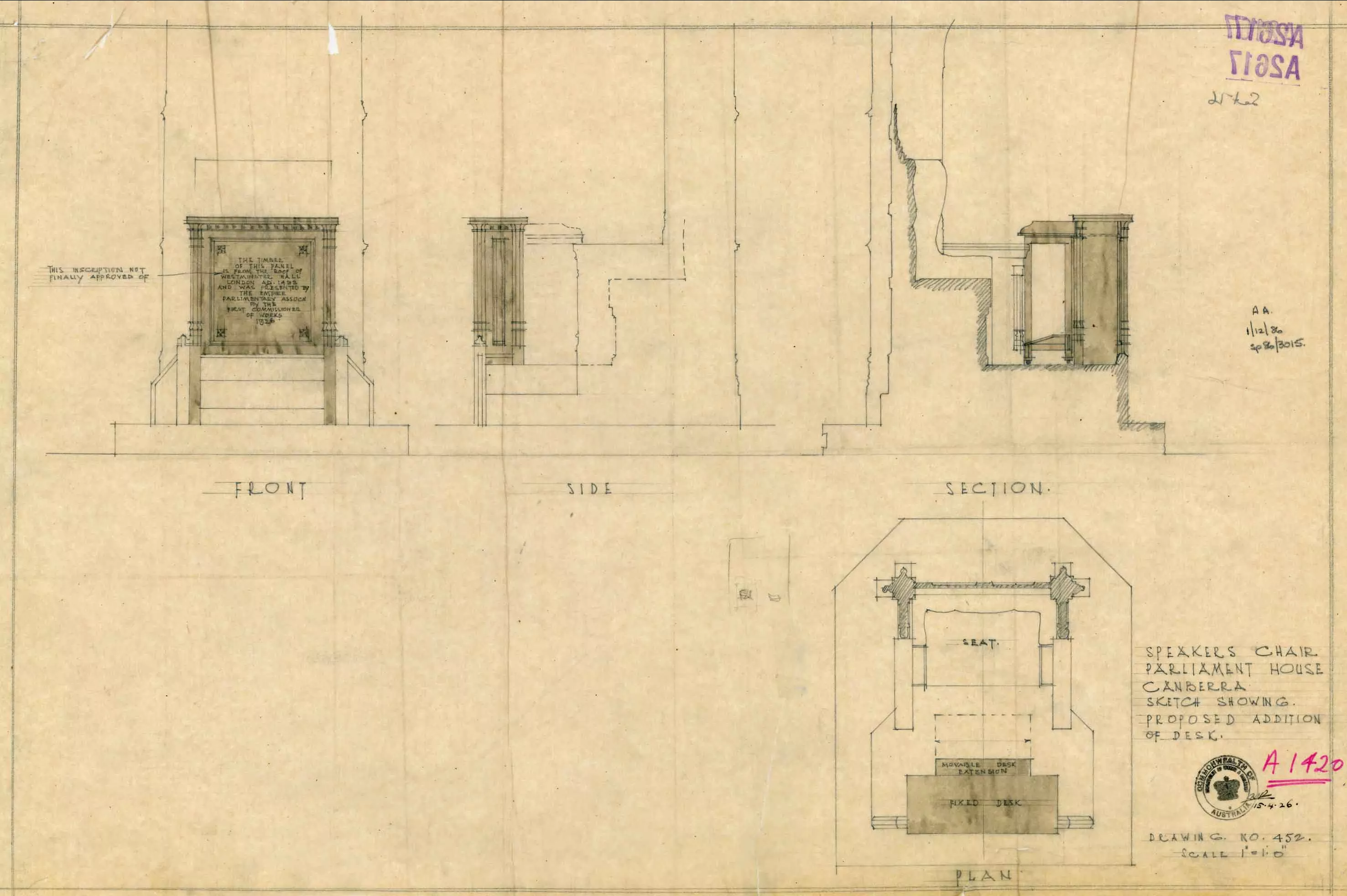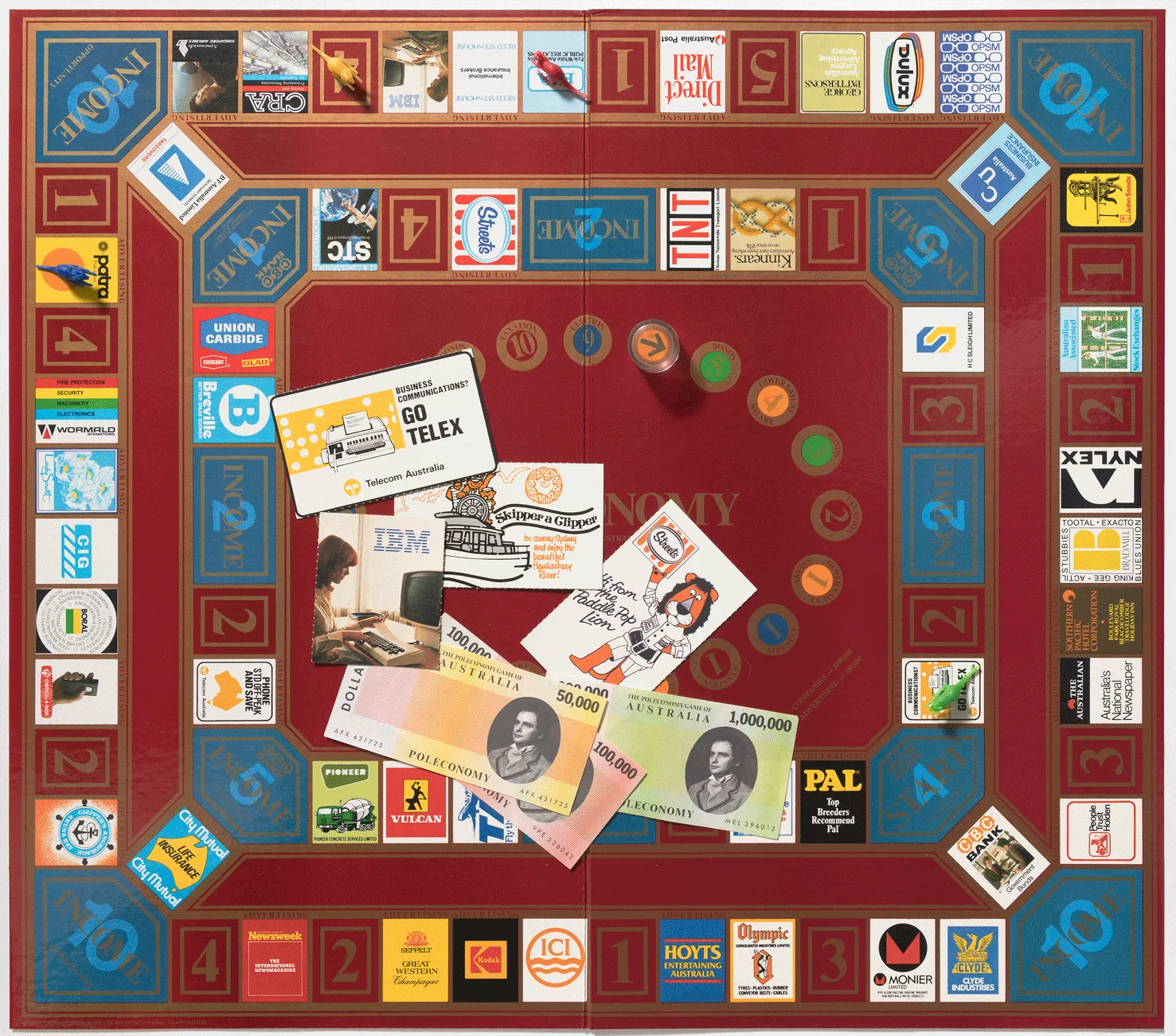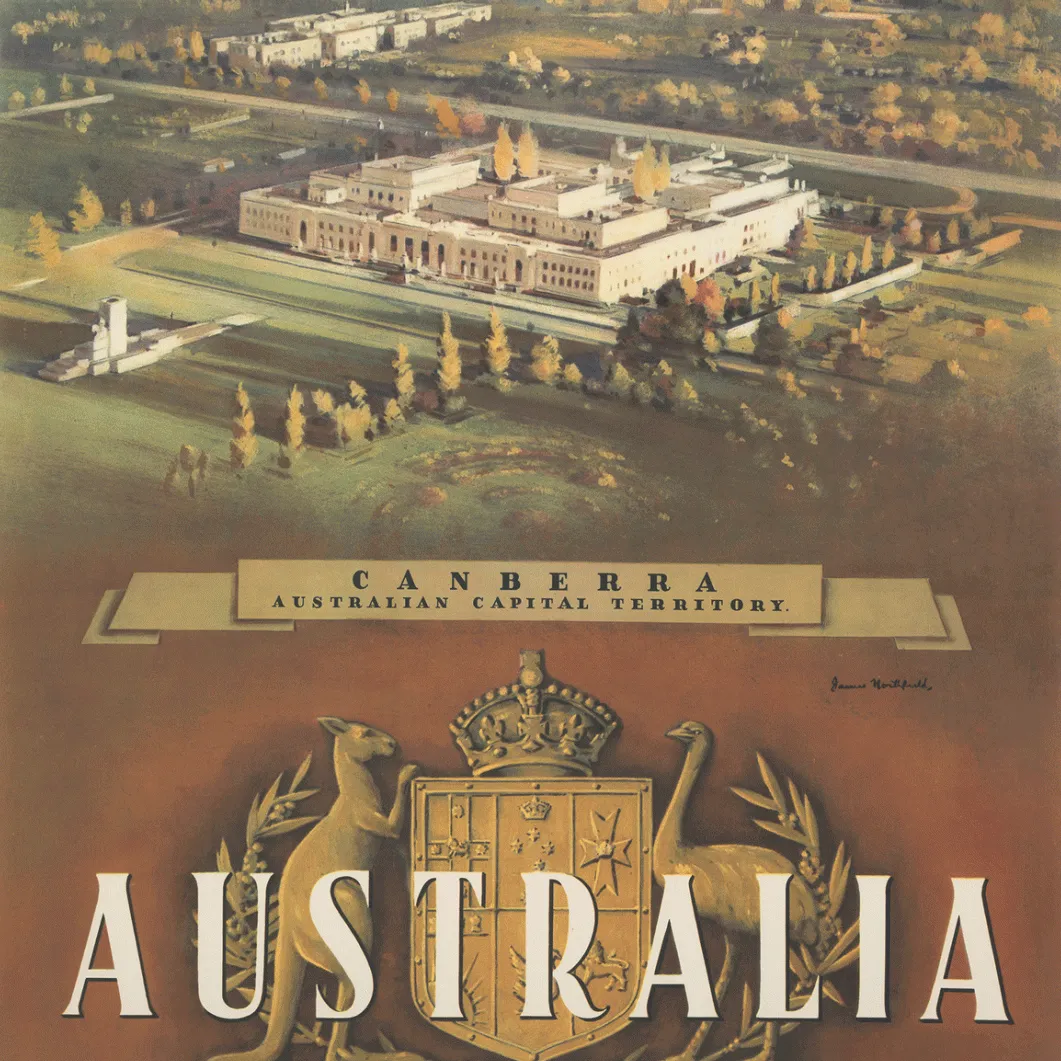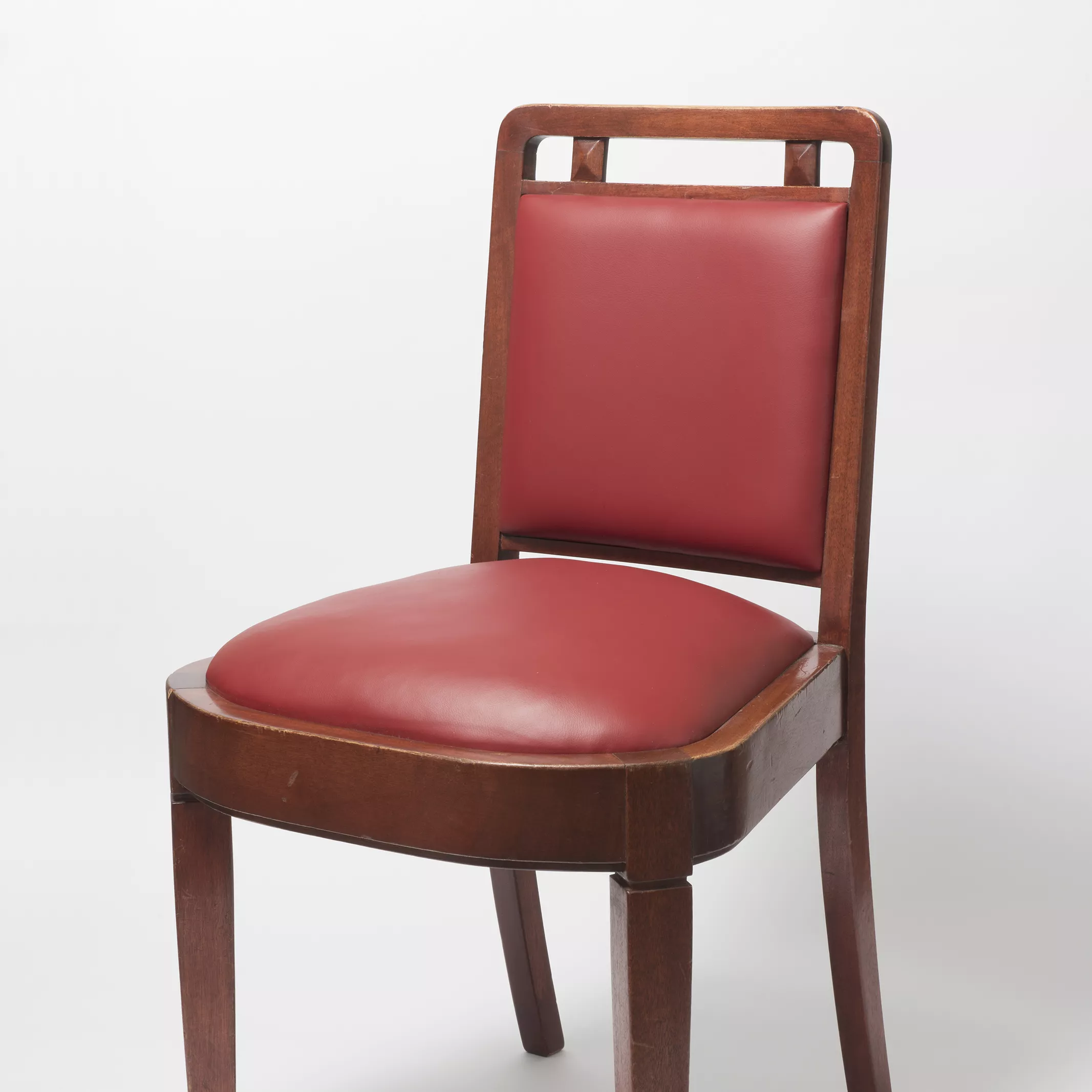Speaker's Chair
Take a seat.
The Speaker's Chair, an awe-inspiring, intricately carved neo-gothic-style chair, sits in the House of Representatives Chamber and is an almost exact replica of the United Kingdom's own Speaker's Chair in the Palace of Westminster. Carved from oak and timbers from both Westminster Hall and HMS Victory, the flagship of Admiral Nelson at the Battle of Trafalgar, the Chair speaks to Australian democracy's deep ties to the United Kingdom.
Notable details on the Chair include a crossed mace and black rod motif, the British Royal Coat of Arms, Queen Victoria's initials, Tudor roses, and Latin inscriptions on the sides which translate to, 'The hand that deals justly is a sweet-smelling ointment. A heedful and faithful mind is conscious of righteousness. Justice is influenced neither by entreaties nor gifts. Liberty lies in the laws. Envy is the enemy of honour. Praise be to God.'
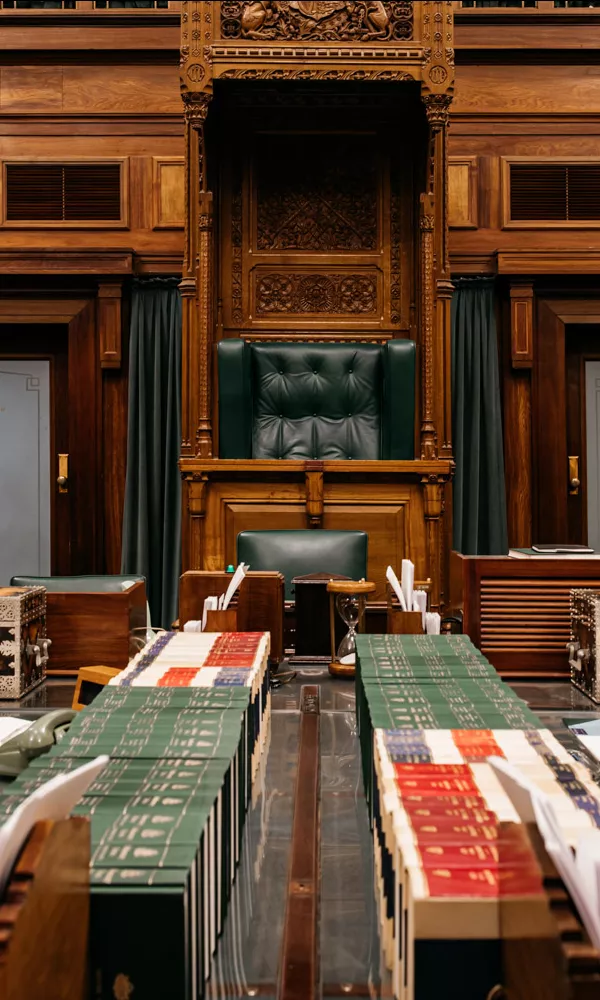
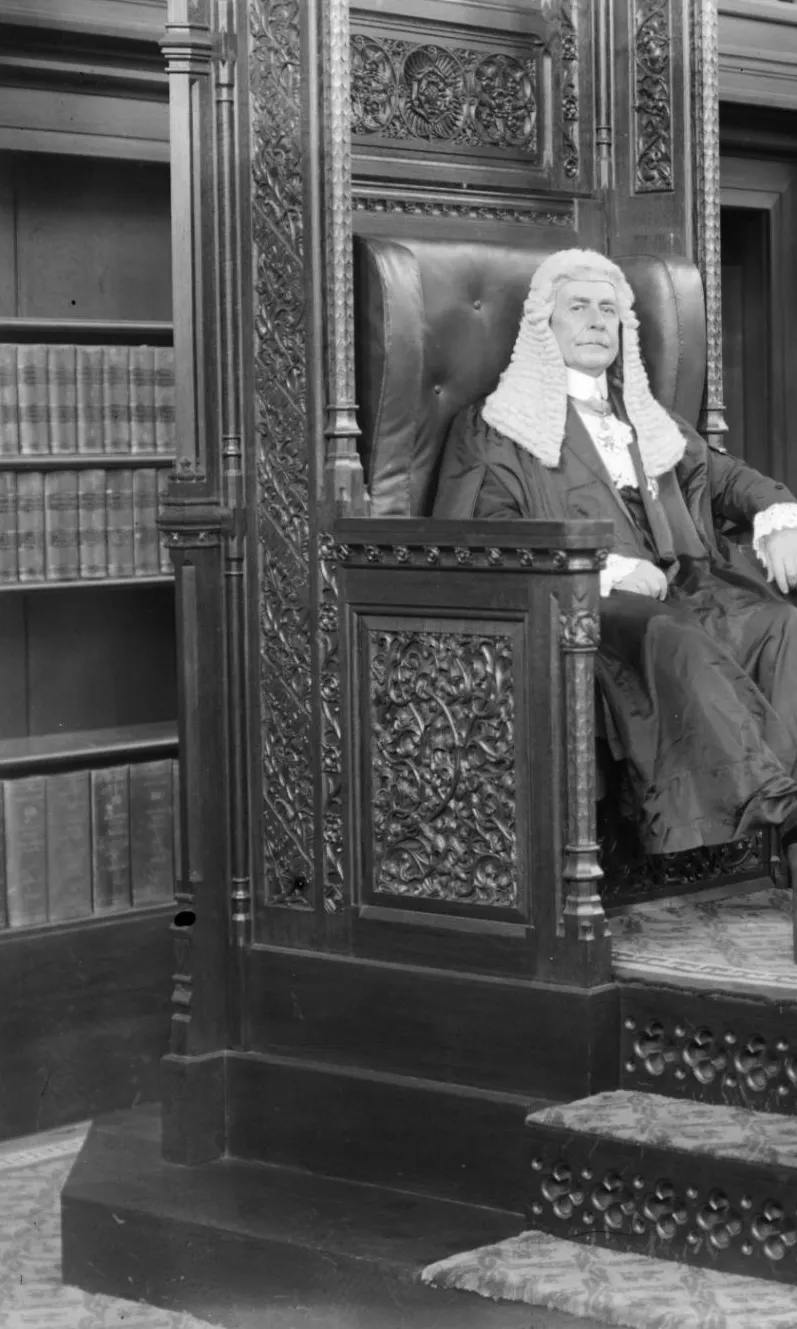
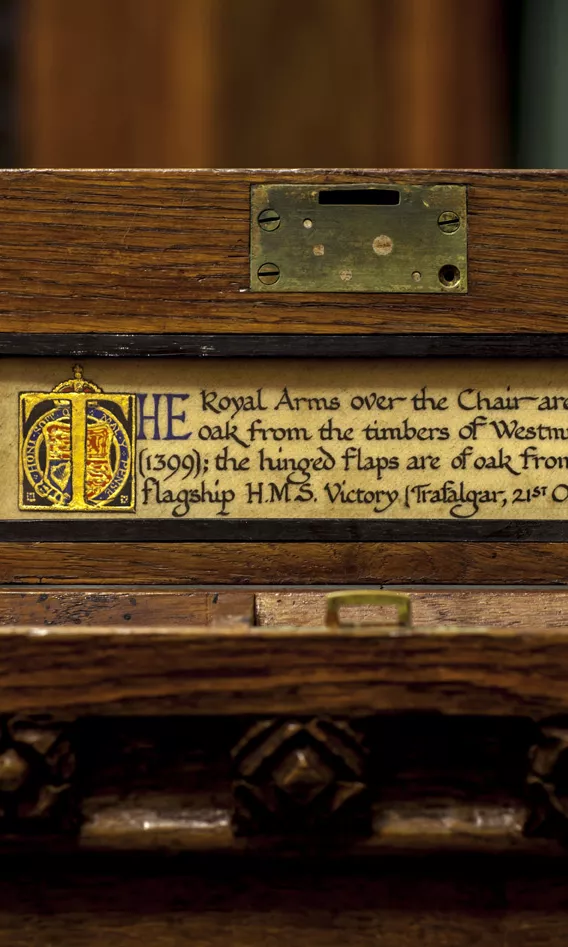
Centre: Sitting in the Speaker's Chair Sir Littleton Groom is presiding as Speaker in the House of Representatives, May 1927.
Photograph National Archives of Australia: A3560, 3091
The Speaker's Chair was formally presented to the Australian Parliament on 11 October 1926, a gift from the United Kingdom Branch of the Empire Parliamentary Association, and there is an inscription on the Chair denoting this.
Crated up like a modern-day IKEA flat-pack, the Chair travelled from the UK on the Australian Commonwealth Line steamer Hobson's Bay and then by train to Canberra where it was assembled in the Provisional Parliament to its towering four-metre height.
Later, as a practical feature, a small desk was added to the Chair and the timber was matched perfectly.
This coloured technical drawing shows the proposed design of the desk that was added to the Speaker's Chair. There are four views of the desk with an outline of the chair drawn in pencil behind the desk detail. The front, side and top view of the desk are painted in a light grey watercolour.
Photograph National Archives of Australia: A2617, 76/1420
The Westminster Chair upon which the Speaker's Chair was based was destroyed during an air raid in 1941. In an act of solidarity, the Australian government presented the UK with a close replica of the Australian chair carved from black bean, an Australian rainforest timber. The new chair was inscribed with 'The Gift of Australia' and remains an enduring symbol of the connection between Australian and British democracy.
The presentation of the Speaker's Chair to the Australia Parliament by the United Kingdom Branch of the Empire Parliamentary Association, 11 October 1926.
Photograph National Archives of Australia: A3560, 2399
Who built the Speaker's Chair?
The Speaker's Chair was built by Messrs Harry Hems & Sons of Exeter under the direction of Sir Frank Baines of Her Majesty's Office of Works in the United Kingdom. It is based on the UK's Speaker's Chair, designed by Augustus Welby Pugin, one of the interior designers for the rebuilding of the Palace of Westminster after it was destroyed by fire in 1834.
Photographs and plaster casts were used to produce the Australian chair to ensure that it was a faithful copy of the original chair designed by Pugin. Messrs Harry Hems & Sons used traditional medieval methods, using no nails, screws or sandpaper to construct the Speaker's Chair. Remarkably, the chair is held together entirely by dowels.

